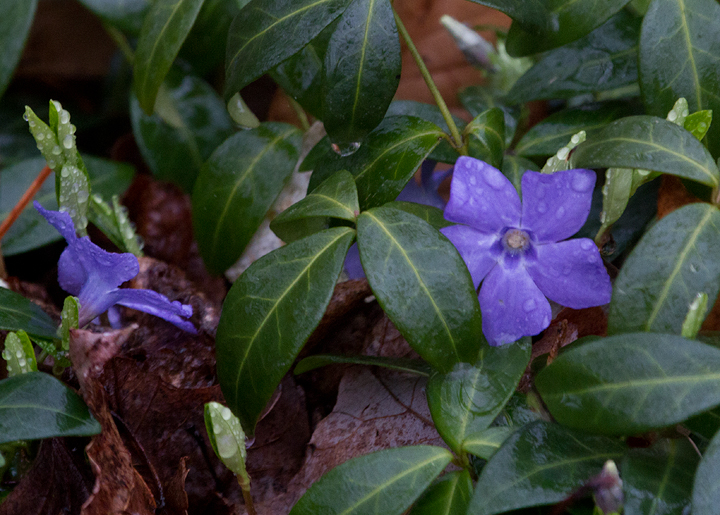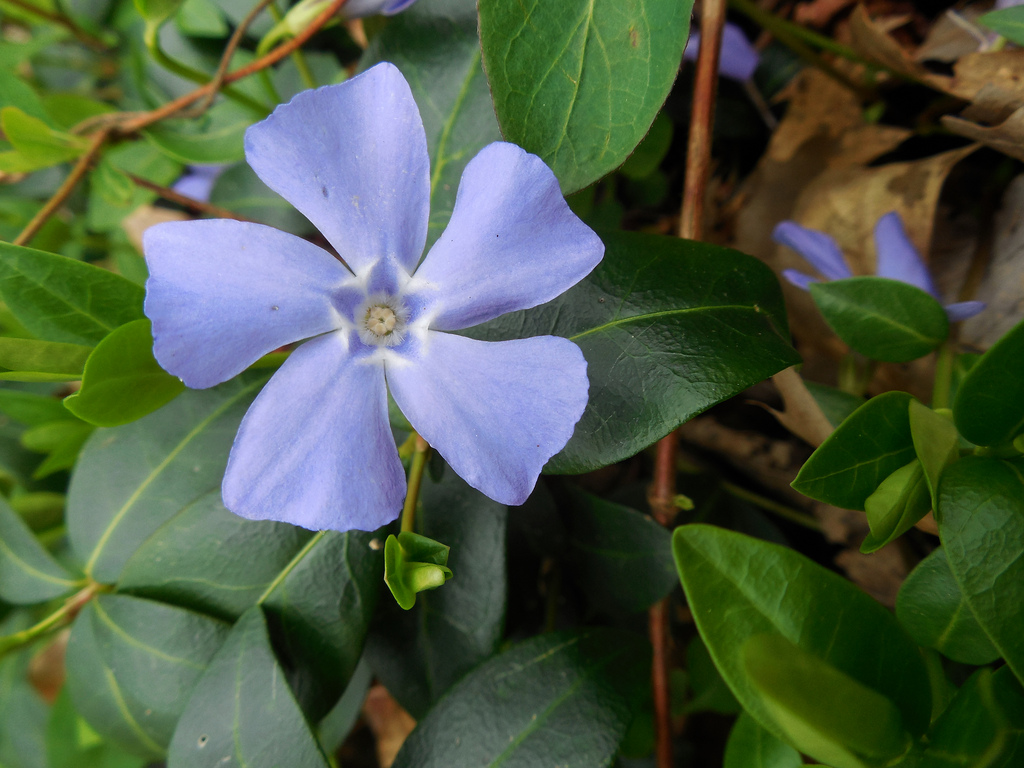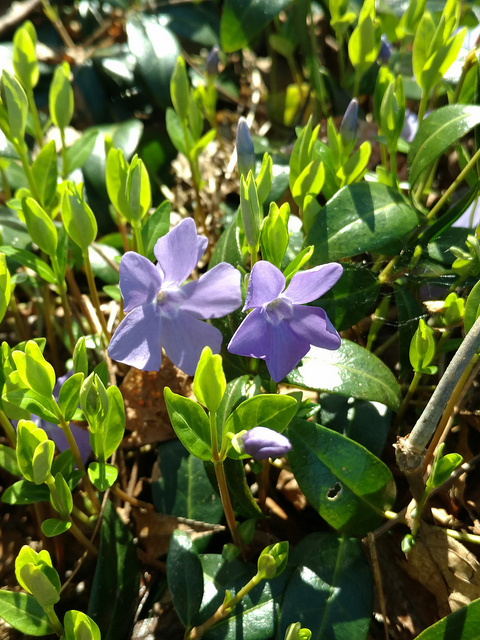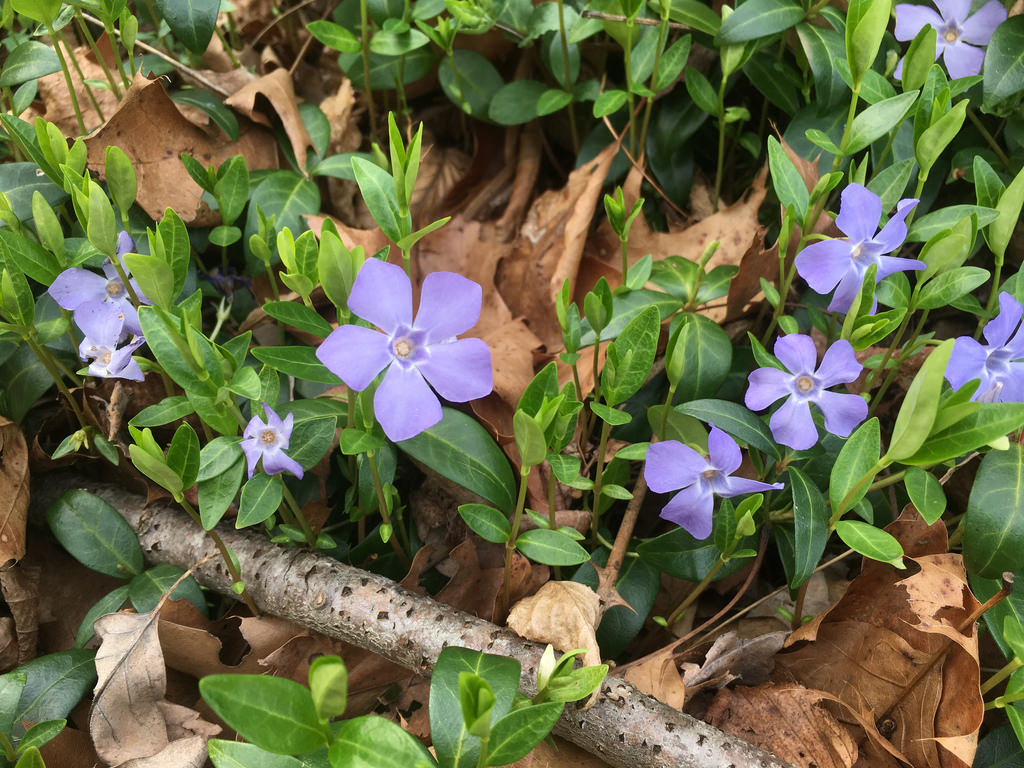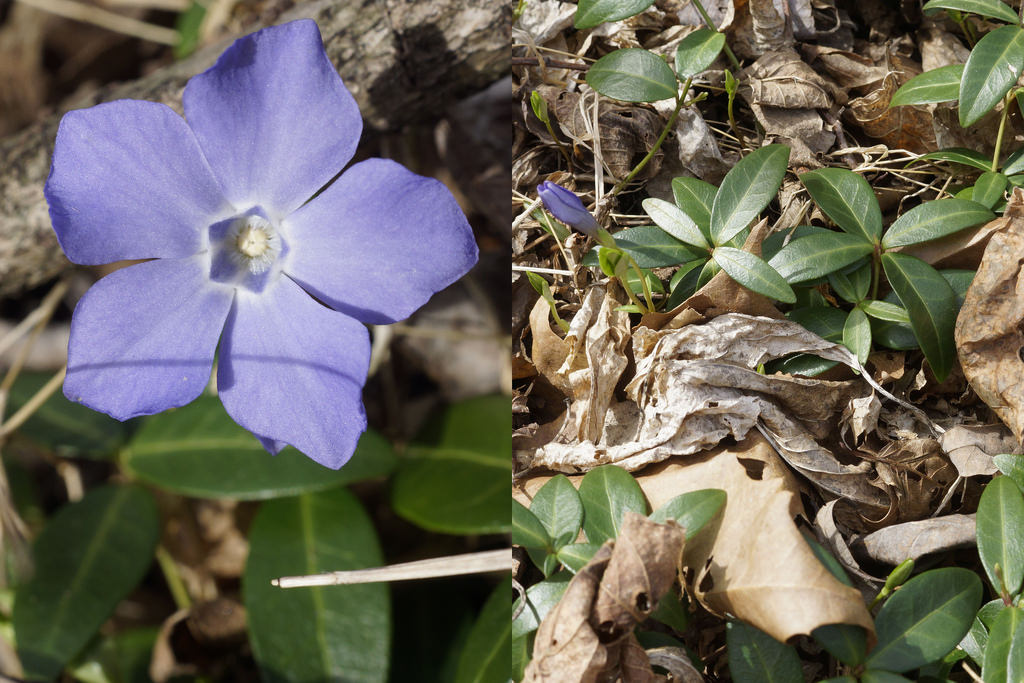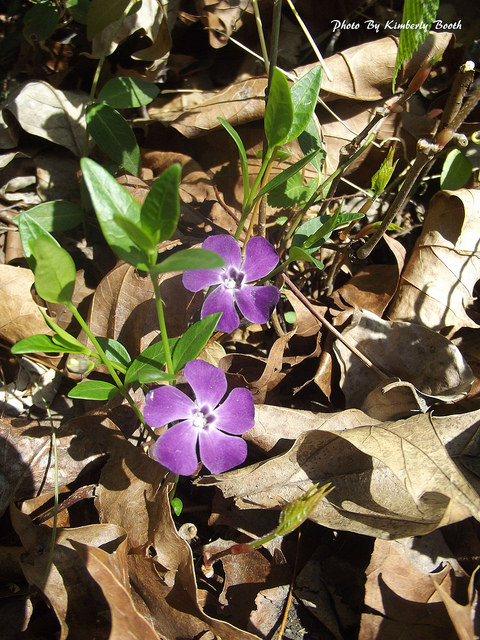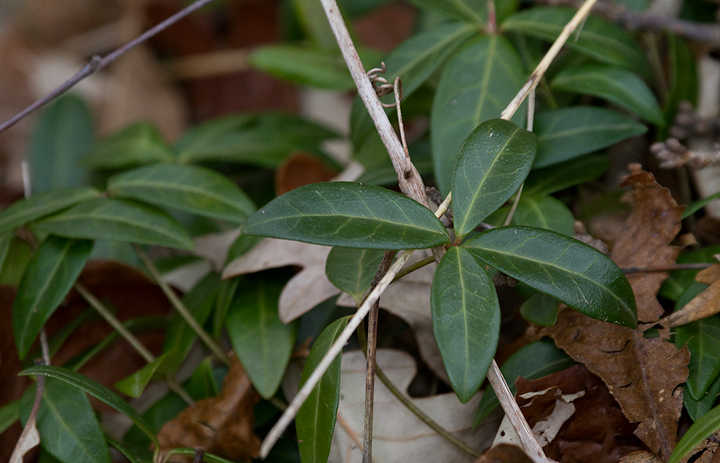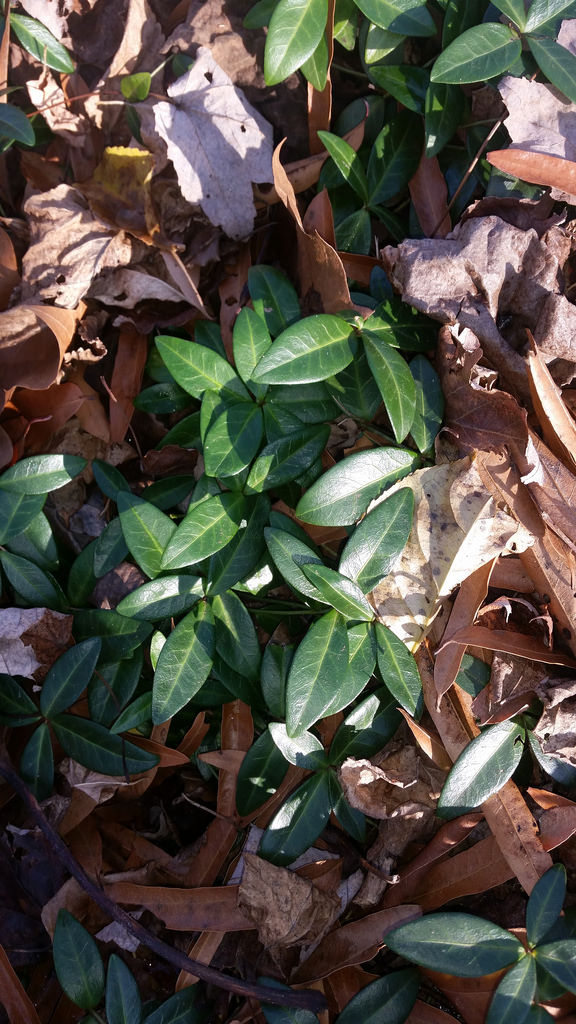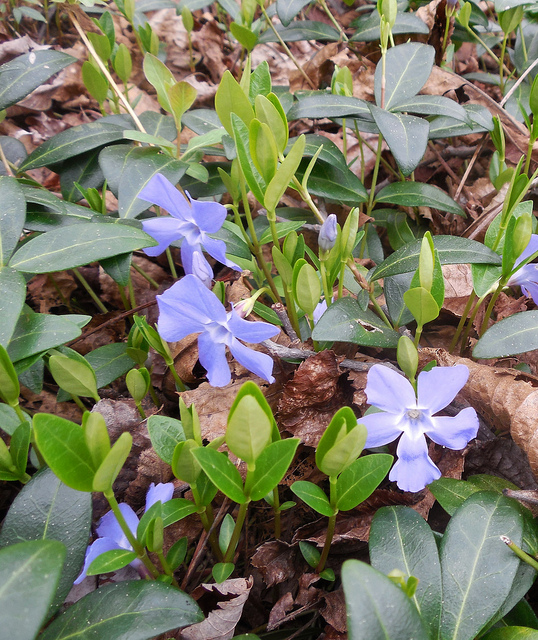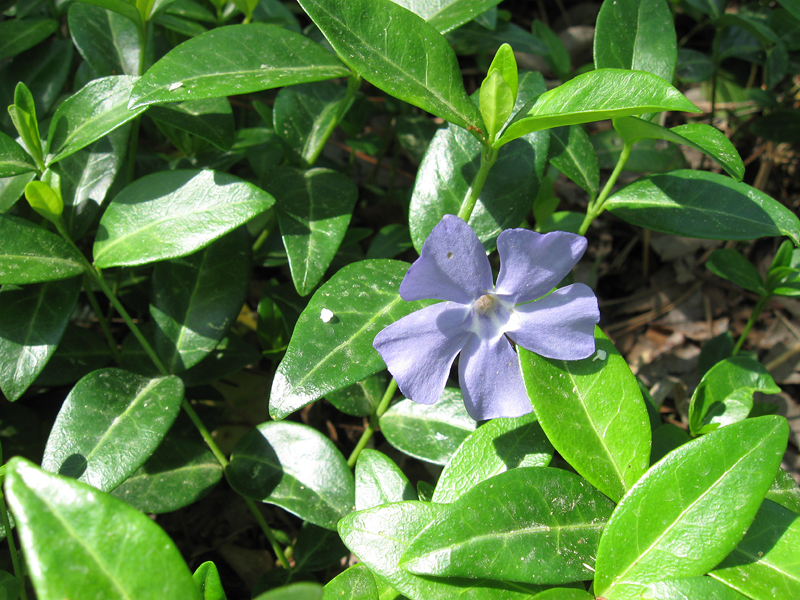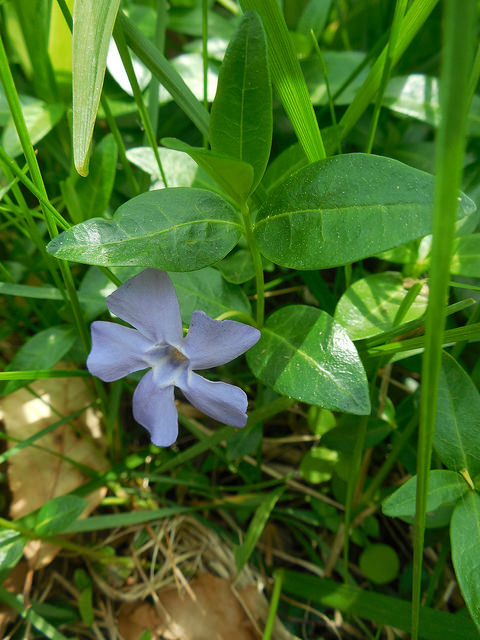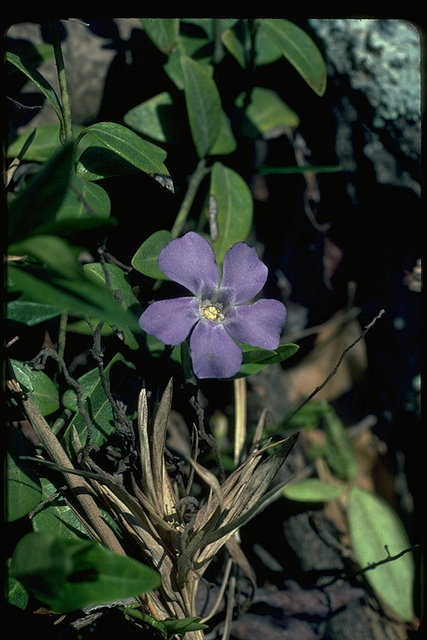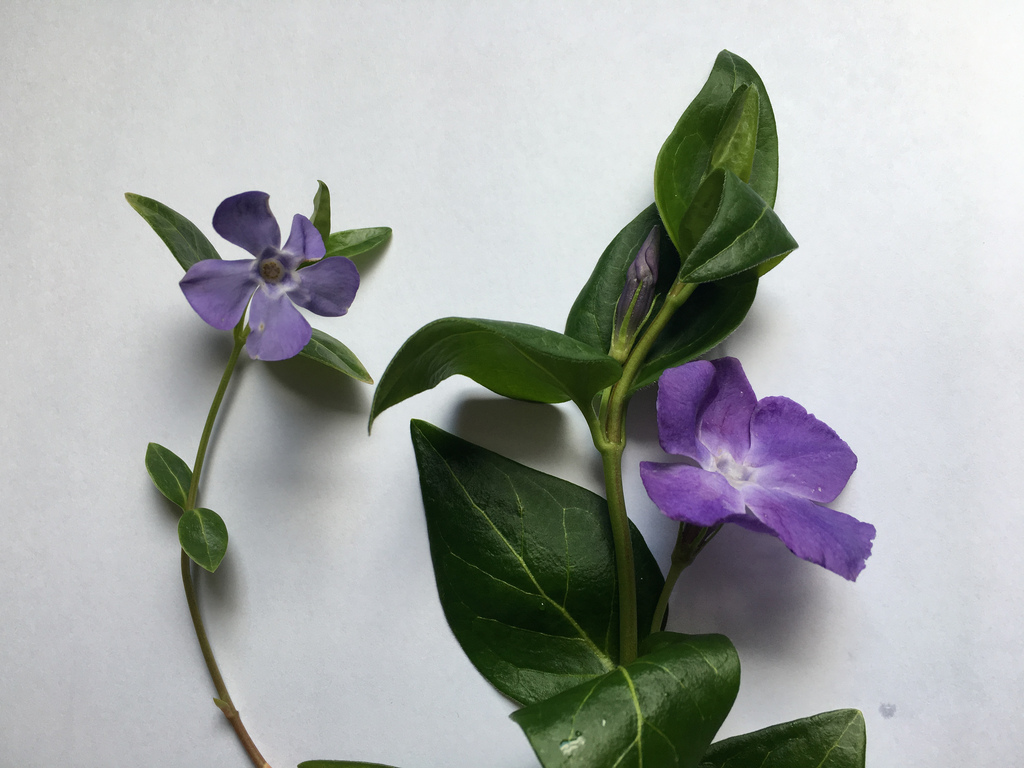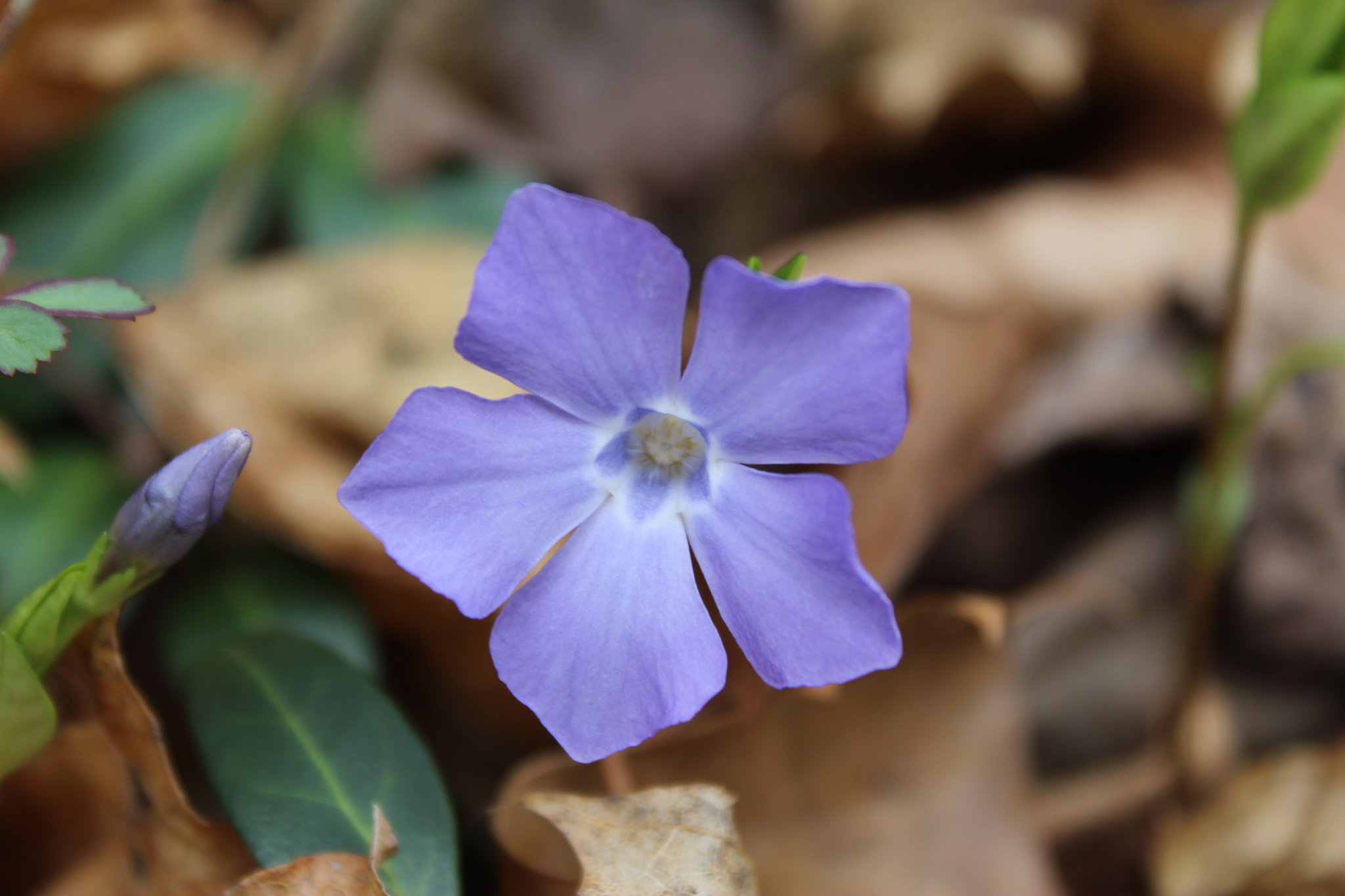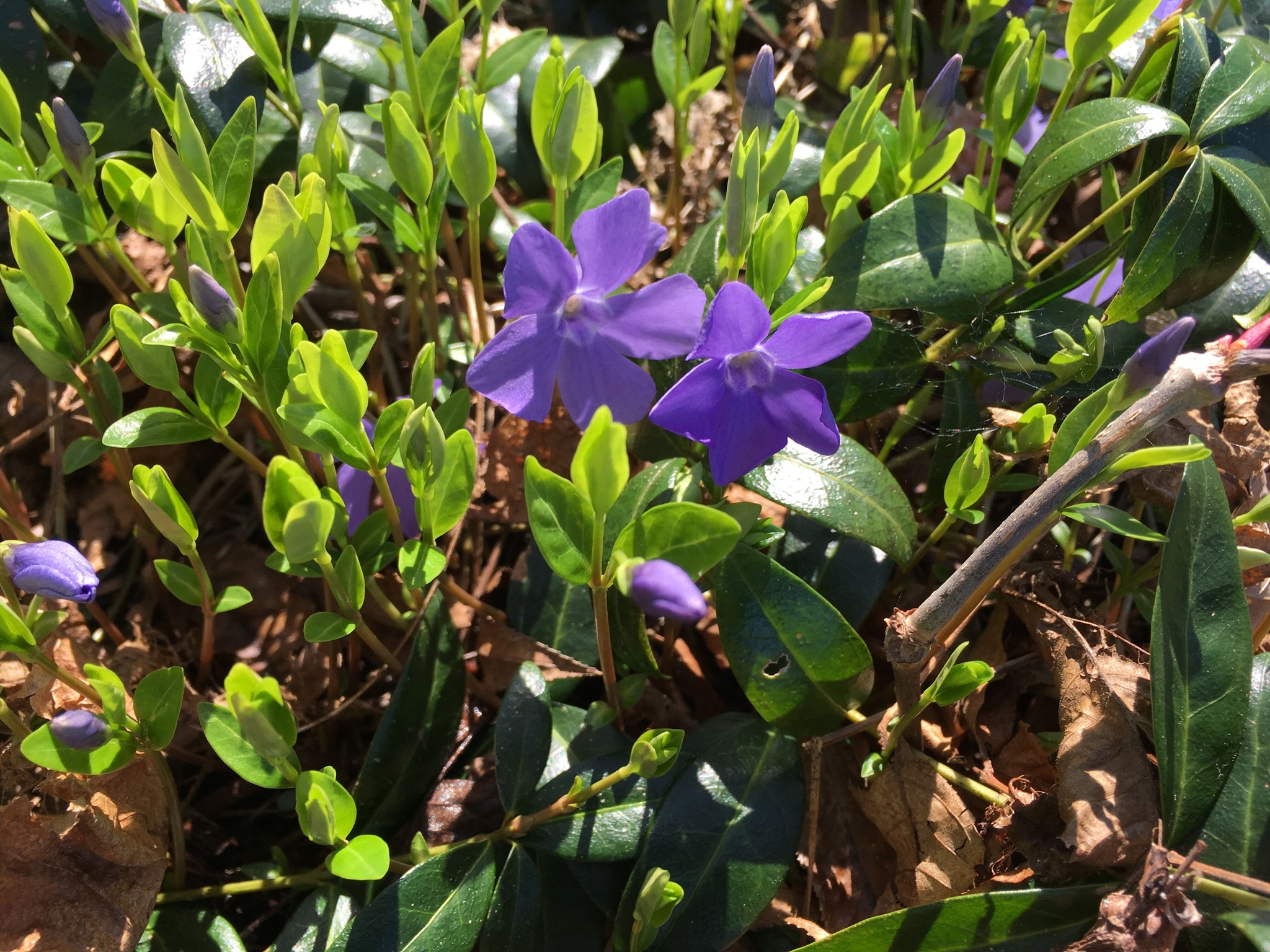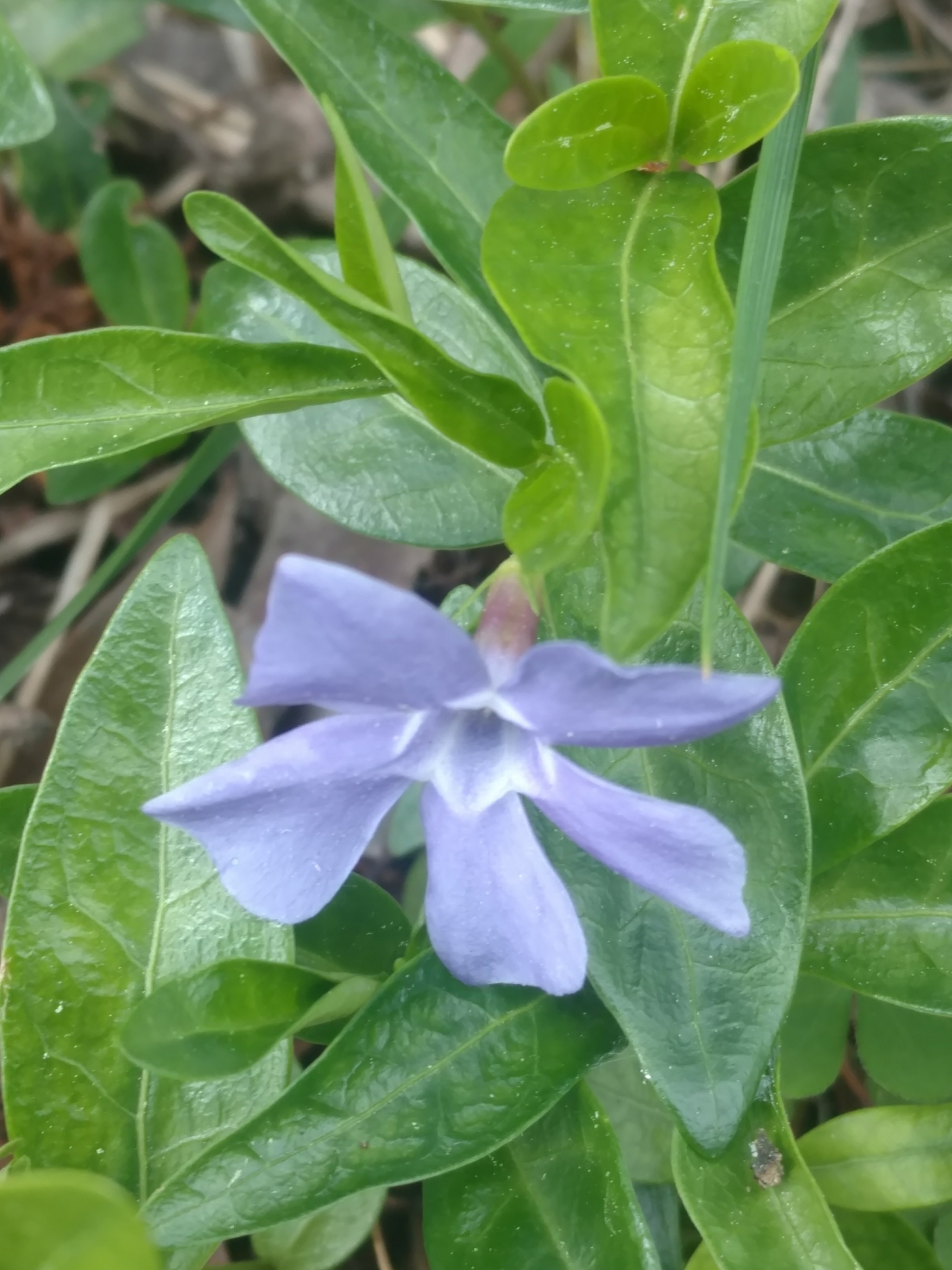

 Synonyms: Lesser Periwinkle.
Synonyms: Lesser Periwinkle.























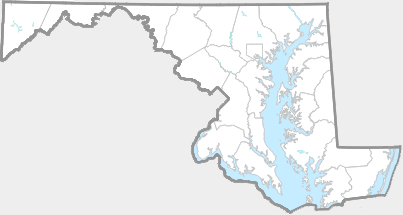
Common Periwinkle is a common invasive ground cover that has escaped from cultivation throughout Maryland. Common Periwinkle is native to central Europe and the Mediterranean area west into the Caucus region of Central Asia. Common Periwinkle was first introduced to the United States in the 1700s as an ornamental. Unfortunately, Common Periwinkle really likes the United States and is now established in most states. Common Periwinkle spreads quickly through fast growing rhizomes and can quickly invade a forested edge, making an impenetrable ground cover that quickly outcompetes native plant species.
Common Periwinkle is closely related to the more uncommon Bigleaf Periwinkle (Vinca major). The two Vinca species can be easily identified by looking at the structure of the plants. Everything about Common Periwinkle is smaller than Bigleaf Periwinkle. The leaves of Common Periwinkle are lanceolate with a cuneate base and are broadest towards the middle. Bigleaf Periwinkle leaves are more ovate with a base that is variably cordate and is broadest near the base of the leaf. The flowers of Common Periwinkle are 2 cm to 3 cm across while the flowers of Bigleaf Periwinkle are 3 cm to 5 cm across. The flower pedicels of Common Periwinkle are shorter than Bigleaf Periwinkle: 1 cm to 1.5 cm for Common Periwinkle and 3 cm to 3.5 cm for Bigleaf Periwinkle (Weakley, 2015).
There are 385 records in the project database.
| GA | AL | WA | FR | CL | MO | HO | BA | BC | HA | CE | PG | AA | CV | CH | SM | KE | QA | CN | TA | DO | WI | SO | WO |
